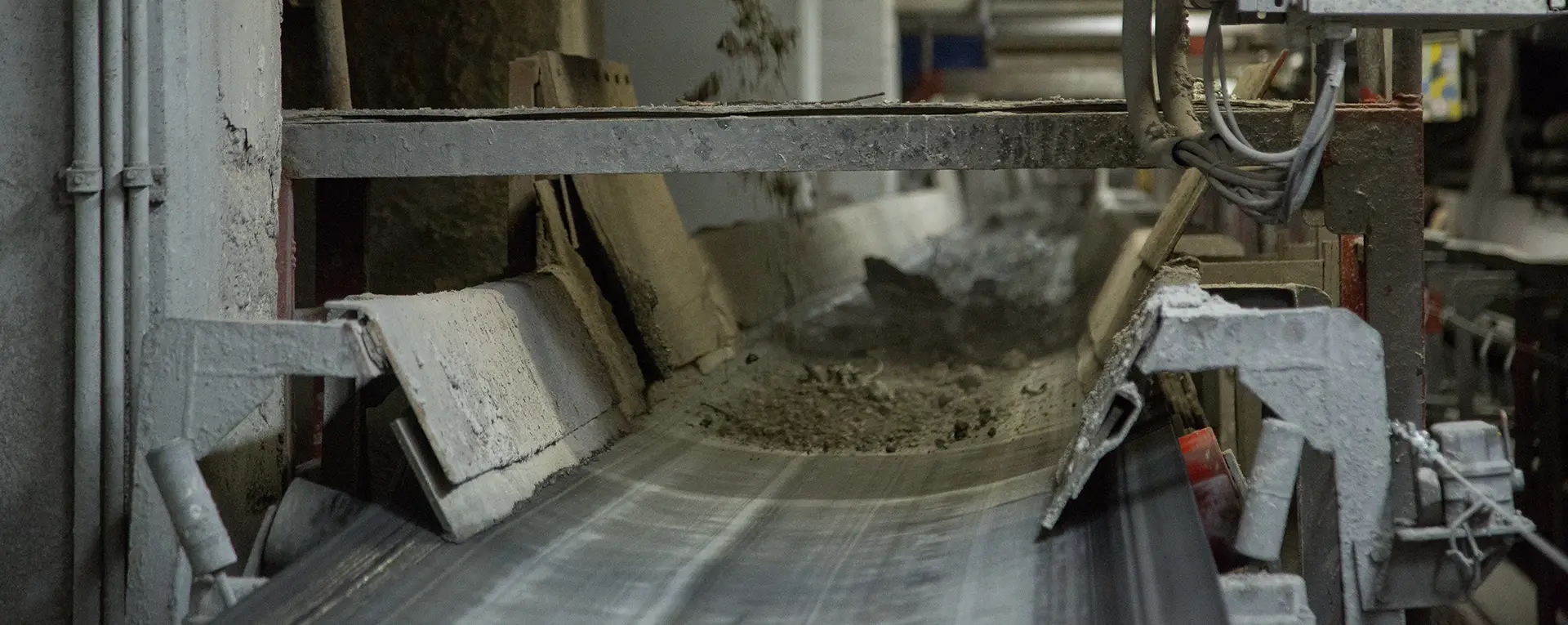
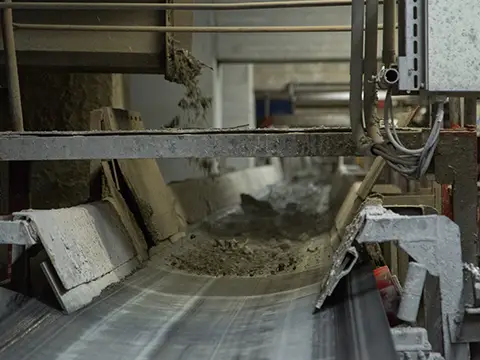
Nothing remains unused after incineration
Even with the most modern and efficient plant technology, residual materials always remain after incineration. Waste from waste disposal? Not at all. Because the GMVA leaves virtually nothing unused. Instead, we do everything in our power to convert the residual materials in an environmentally friendly way using sometimes highly complex processes and, wherever possible, to make them usable. For example, as important materials and building materials for industry.
Flue gases
Each GMVA boiler produces around 131,000 m³ of flue gases per hour. Of course, these must not be released into the air without being cleaned. In order to comply with legal regulations and our own understanding of environmentally friendly incineration, they are thoroughly cleaned in several stages before being discharged via the 140 m high chimney.
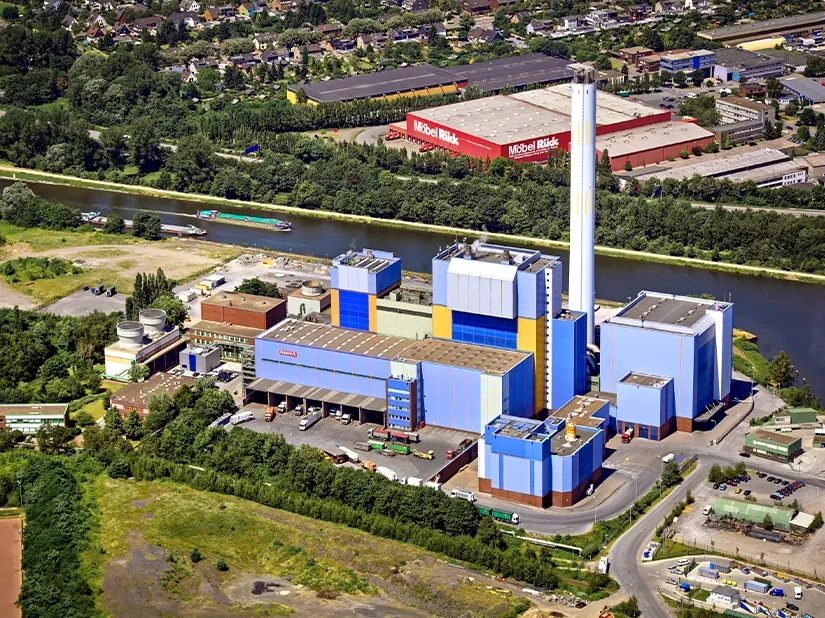
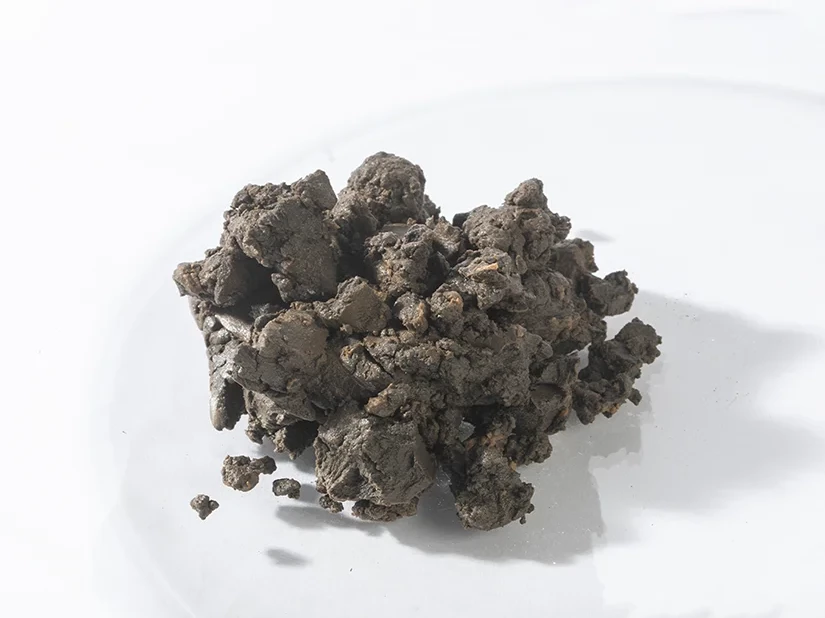
Filter cake
Among other things, heavy metals are washed out in the flue gas scrubbers and converted into solid form using a wastewater treatment plant. The result is hydroxide sludge. In the next step, flocculants are added to this hydroxide sludge. This makes it easier to separate the solids from the filtrate. The chamber filter press finally takes over this separation and removal of the solids.
Fly ash
“Dust traps” are annoying at home, but very useful for cleaning fumes. Dust is separated in the electrostatic precipitator by means of ionization, which also causes television screens to attract dust. The result is fly ash, which is disposed of separately.
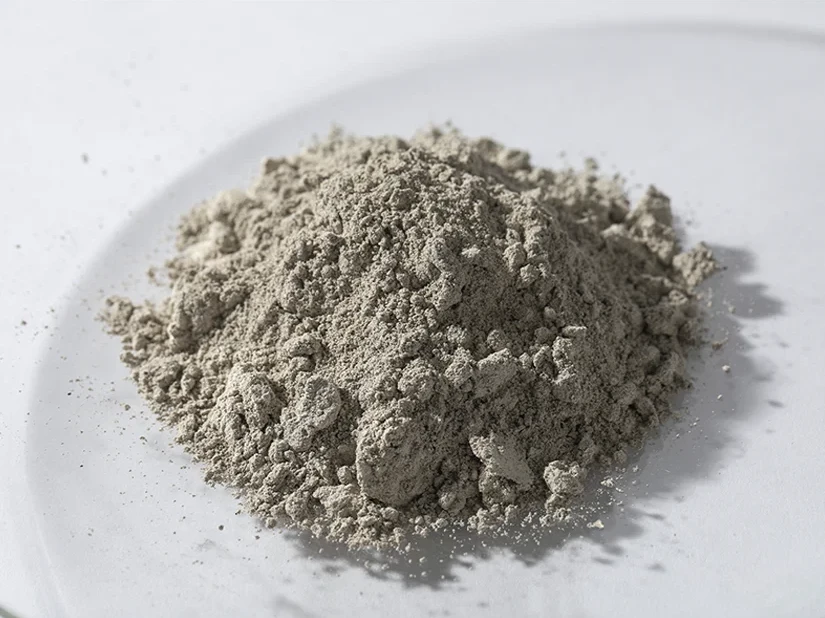
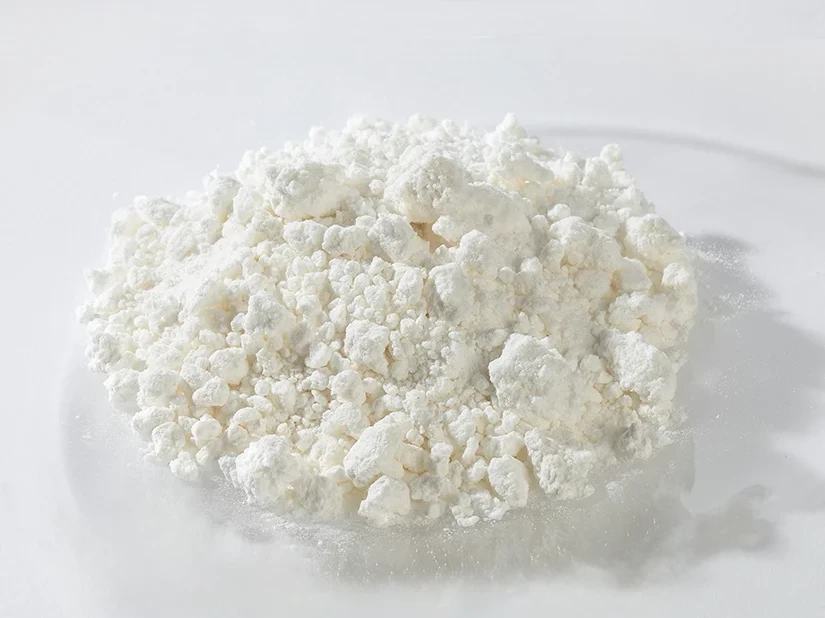
FGD plaster
One product of flue gas scrubbing is so-called FGD gypsum. The sulphur dioxide contained in the flue gases reacts with the added milk of lime to form gypsum. After cleaning and subsequent dewatering in a centrifuge, this FGD gypsum is first stored temporarily in a gypsum silo and then recycled. FGD stands for flue gas desulphurization plant.
Slag
After leaving the boilers, the unburned and non-combustible components of the waste land on a conveyor belt and are temporarily stored in a separate bunker. The volume of slag is only 8% of the original waste. The proportion of combustible components is less than 1%. The slag can be processed to produce building materials, for example for road construction.
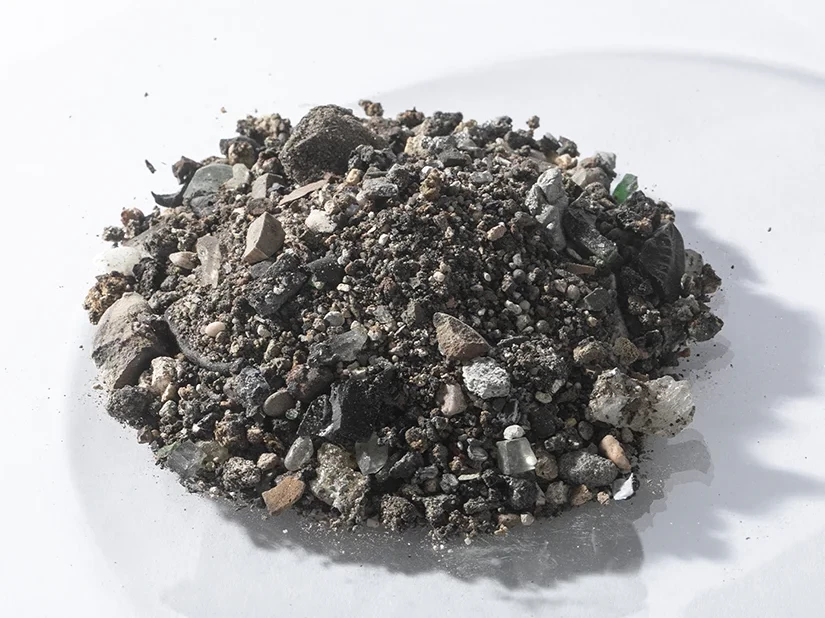
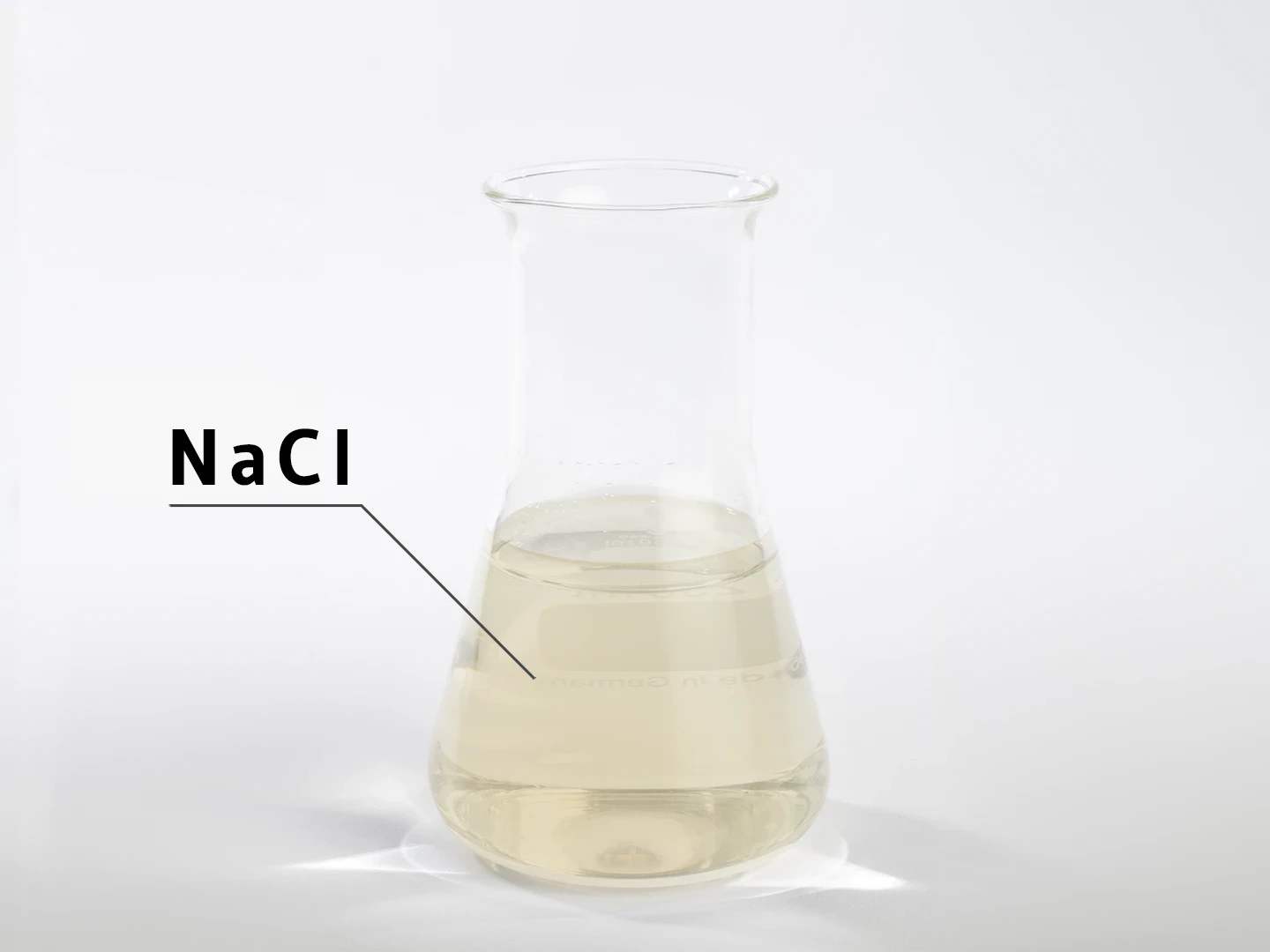
Brine
The flue gas cleaning process naturally also produces waste water. This is reduced to approx. 25 % of its original volume in the evaporation plant. This produces a calcium chloride concentrate (CaCl2), which is recycled.